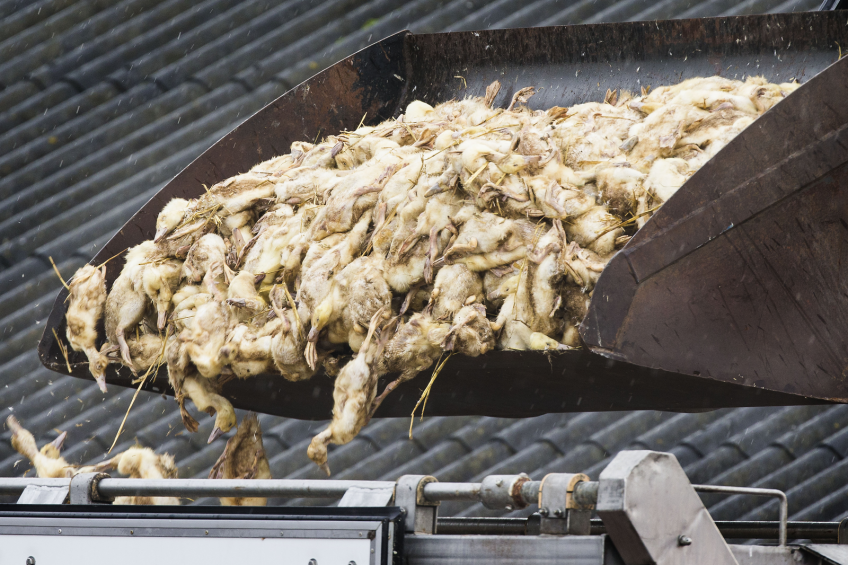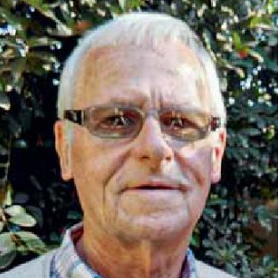Avian influenza vaccination not a long term solution

Today’s ever increasing prevalence of Avian influenza, in particular the H5N8 subtype, shows the weak spots of the poultry industry. Unfortunately a vaccine has not been made available, but no doubt this will change in 2015. An effective inoculation programme will bring sighs of relief and once again a feeling of security will prevail. Is this the answer? Maybe short term, but certainly not long term.
The flaring up of a new subtype of avian influenza resulted in havoc in many countries in the Northern hemisphere in the last months. New transmission routes in migratory birds resulted in outbreaks from Asia to Europe to North America. Stamping out the disease was the only way to go and trying to prevent the virus from entering the poultry houses with tough biosecurity protocols. That works on an individual farm level, but a structural approach is needed. What is required is a new approach to our mass number protein production chain and this can only be implemented by a central body. This has to ensure that poultry production is carried out universally, under a set of rules, deemed to initially bring production in all countries to adhere to a ‘code of practice’ by using a set of rules that must be strictly carried out by each country. To agree to and to adopt a set of ‘basics’ in order to give poultry the best possible chance to remain healthy, grow at an acceptable rate, with the lowest mortality and FCR and giving the producer the best possible return on the capital investment.
What are the basics in battling poultry diseases?
Ideally poultry has to be housed in ‘all in-all out’ sites. Only one age group per site. This is the number 1 rule of thumb and has to be in place, everywhere. Multi-aged sites will have to be changed to all in-all out. Anything can be achieved if the will is there to do it. When one sits down and thinks about it all, it is not so difficult to visualise. With avian influenza causing immense damage for some 10-plus years now, one wonders why this issue wasn’t addressed years ago. Luckily it was addressed in part.
Looking at the basics in battling Newcastle disease, one came to the same conclusion. Newcastle disease was possibly the main driver to bring in single age all in-all out sites. When vaccination was introduced that took care of a lot of the stress that poultry farmers endured and in the process stabilised finances. Now we have a new disease to keep us on our toes, one which has caused a lot of havoc where it has struck. Not only to the owner of the farm / site where the disease was first diagnosed but also to all those in a certain radius of the outbreak, many of whom were farming correctly and at a good distance from the central outbreak location. This can make the total loss in the area astronomical with only the large companies having the chance of financial survival. One can say, one of the risks of livestock farming.
Currently, one has to say yes!
It is still not too late to cancel this threat to our industry which could cause lots of problems financially and create a world shortage of animal protein for human consumption. Vaccination, not being currently available, is not in the equation and in this equilibrium is not the ultimate answer even when an appropriate vaccine has been developed. However it will have a calming effect and work in conjunction with a programme that will reduce the incidence of the virus.
Even if a vaccine is available during 2015 this will be only part of the answer and must be used to work together under a set of poultry production codes and be strictly policed. If not, there will still be too many ‘dirty’ farms still around which will have to conform to production policies set out or else be taken out of production without compensation and used for something else which excludes livestock.
Many possibilities, but how to get started in poultry farming?
There is a big picture to be drawn up, setting the basics for the ‘Code of Practice’ as mentioned. Call it what you will, this new ‘basic infrastructure’ for all the non all in-all out farms must be taken on board and implemented worldwide. Poultry production is a science. One has to learn it just like an airline pilot, a medical doctor or an atomic
scientist. Each has to be a specialist in his own field.
The days of starting up as a poultry farmer to farm, just as you wish, will have to disappear. Many current farmers who cannot comply with the criteria, will fall out. However, demand for poultry meat and eggs are high and the industry has to accommodate as many existing farmers into the new type infrastructure as possible. Perhaps unfortunately some may fall away in order to allow for the overall system to be globally the best possible for a much better production environment and workable system. This will be required to produce enough animal protein for a growing number of people.
What is the programme?
With each daily global report on the most recent avian influenza outbreaks it is more evident that wild bird migration plays a dominant role in the spread of AI. What is clear is that the poultry industry has full awareness in the need for immediate change in certain production practices that are carried out worldwide and ban practices that lead to higher possibilities of contacting the virus. This in conjunction with producers who are farming incorrectly which also increases the spread of the virus from a basic management point of view, carrying on with inadequate unhygienic methods of production as well as sales.
Traditional ways of doing things may be involved in certain instances, if these are negative to new rules and regulations then production in certain areas may have to cease for benefit to all for a global cause. Millions are crying out for food around our world and it is our right to alleviate this crisis. As well as mass bird euthanasia that accompanies it to ensure the virus is stopped in that area. This is one of the most sensitive aspects in the current procedure. We must act on the present and set in place reforms to sustain our world according to our current knowledge and expertise to pass on to the next generation the optimal production methods of our time which can be a legacy to future generations.
Who will implement it in the poultry industry?
Firstly it takes money to implement any rules and regulations, money that has to be spent. It is the poultry business as a whole with the whole livelihood of the world’s population at stake. So it is imperative to take certain considerations into account. From a business and ethical perspective one would require individuals who have a passion for animal welfare, and possess the required empathy to work towards systems enabling poultry to exist in production housing with the ability to give the best possible environment for a stress free life span to the chickens. This stress free life in an optimal environmental situation must be carried on until time of death in the abattoir, using the most innovative
methods.
Loading and transportation methods are critical in the stress situation as well as the off loading bays and currently very few of these are using UV (blue) lighting which has a calming effect on broiler chickens, possibly less than 10 to 20% currently comply. However, this is easy to overcome and relatively inexpensive. There are many knowledgeable people with a thorough practical aptitude to make a good start, however many more will need to be trained.
Do we have enough time?
No, in that this process should already have been in place several years ago, if not longer. People have a natural instinct to wait and wait and hope that the wind will blow all their problems away.
Where to in this case? Unfortunately if nothing is put in place to stop this current situation, it will not suddenly disappear. However, time is limited, and we must do our best to put the correct format together in order to bring about the correct change.
A complete turn-around will take years, however a start needs to be made over the next few months. A suggestion is to organise a meeting of interested parties and individuals from all sections of the industry. From breeding companies right through to marketing, sales of the final product, for not only broiler chicken, also table eggs, turkeys, geese, ducks, quail, guinea fowl. However, if we concentrate initially on broilers we will be on the correct path. As this volume dominates it can be the basis for the other types of related species. The
sooner the better.
In an instance like this, who we need, are the ‘early innovators’. Usually those who like to be involved in something new, where they see the need for solid rational thinking coming with a background of experience in taking things to “the next level”. Individuals with a passion to help in assembling a new dimension to solve an existing problem by putting forward ideas that will be part of creating a new concept in the food production chain.
Depending on the response a decision could be made to set something in motion. It’s up to all people involved in the poultry sector from around the world. Your best first move would be to contact your local or national poultry association.
With avian influenza there are only losses and there is no insurance available. Action has to be taken, because the next virus outbreak is likely already there. The decision to take this forward is in the hands of everyone who is involved in this industry.
Source: World Poultry magazine 31.3 (2015)












